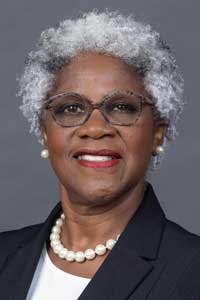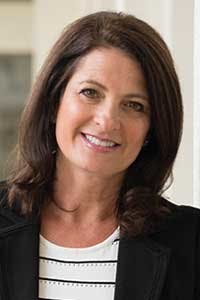DEI Roundtable: Key Associations Highlight Progress and Next Steps
Machine Design, in collaboration with the Endeavor Business Media Design & Engineering Group’s WISE (Workers in Science and Engineering) initiative, assembled a panel of association leaders to reflect on progress made in Diversity, Equity and Inclusion efforts. Though their value propositions differ, our experts each delivered a state of the union on their investments and pointed the way on where to go from here.
Our roundtable consisted of Monica Moman-Saunders, professional engineer and fellow, ASME (American Society of Mechanical Engineers); Dr. Roberta Rincon, associate director of research, SWE (Society of Women Engineers); and Jackie Mattox, founder, president and CEO, Women in Electronics.
Below, an abridged version of their conversation captures an essence of their work.
Rehana Begg: How does DEI show up in your association’s value proposition?
Monica Moman-Saunders: ASME’s approach is to change the culture of engineering. We are advancing DEI internally through volunteer engagement and by providing accommodations for people with disabilities, by fostering inclusivity in event participation, enhancing inclusivity for working parents and supporting women and career empowerment.
Roberta Rincon: The Society of Women Engineers is a diversity serving professional association. Our 40,000 plus membership is predominantly women. Our mission is to empower women to achieve their full potential as engineers and leaders, and we strive to demonstrate the value of diversity and inclusion…It’s only recently that we have considered ways in which we, as an organization, can and should serve as a DEI model for others.
Our current strategic plan includes four broad goals, one of which focuses specifically on DEI and belonging (DEI&B). The goal states, “We will champion intersectional diversity within engineering and technology and model an inclusive and equitable environment.” Under this goal we have strategic objectives that we AIM to achieve over the next three years.
Jackie Mattox: At Women in Electronics, we are a dedicated organization focused on gender parity, opening the opportunities for women in the electronic component industry and related end-user markets…With DEI&B, you really need unity…We enlist our male counterparts to be allies and sponsors in this effort. Education is critical…Our goals are to empower, advocate, develop and celebrate.
Mentorship is huge part of what we’re doing. We’re connecting Europe and the United States right now with industry veterans and mentors that could mentor our members. We’re primarily women, but we’re trying to get more men to join as well.
MM-S: “As of late, we’ve even seen some donors inquire about our DEI initiatives when they are talking to us about giving...I’d say our investment has increased, and so has the sponsorship.
JM: We judge it more on women going to executive conferences because, once you get to that level, we have not made progress… We do see an increase in awareness and an increase in the intent to do something. With our sponsor companies in particular, funding has seen an increase…Not everybody knows what to do. Having conversations about DEI programs are essential because more people would do more, but they don’t know where to start.
RR: We need organizations to be comfortable to put up a mirror and say, “Okay, if we’re serious about this, then we’ve got to see where we are right now and really make those changes that are needed.”
RB: “Diversity fatigue” is not a new phenomenon, but it basically refers to the stress associated with laborious attempts and fears associated with trying to diversify the workforce. When people are overwhelmed, disheartened, how do we continue to demonstrate that DEI initiatives are institutionally beneficial?
JM: That’s a very difficult question. It’s an evolving conversation. It’s about how well can you pivot, and how well can you take in new information...How do you communicate it back to stakeholders and members in a way that’s digestible and useful? This is not easy. But my motto is, keep it simple. We just try as much as we can to simplify a very complicated subject. So, I would just say, practice agility; we adapt, we change, we take in new information, we adjust to that.
MM-S: We have to meet people where they are, and recognize that everybody is at a different point on the spectrum…The strategic measure we can take to stem fatigue, is to be intentional, to stay engaged and to keep focusing on the task. It has to be done every day, repeated over and over, and eventually the change will become a part of the culture and a fabric of the organization.
Studies shows that gender and ethnic diversity can and has increased many companies’ bottom line. Now, I believe it would be the same for organizations that embrace diversity. The outcome is always better when there are diverse inputs.
RR: Globally, we’re paying attention to DEI, tying funding to some of this work and bringing greater recognition to the contributions of those who have been overlooked historically. We’ve got to take advantage of this time and push these initiatives that we believe are going to create the systemic change needed to create the inclusive climate and culture within these STEM spaces that is just missing.
Editor’s Note: Machine Design's WISE (Workers in Science and Engineering) hub compiles our coverage of workplace issues affecting the engineering field, in addition to contributions from equity seeking groups and subject matter experts within various subdisciplines.
About the Author

Rehana Begg
Editor-in-Chief, Machine Design
As Machine Design’s content lead, Rehana Begg is tasked with elevating the voice of the design and multi-disciplinary engineer in the face of digital transformation and engineering innovation. Begg has more than 24 years of editorial experience and has spent the past decade in the trenches of industrial manufacturing, focusing on new technologies, manufacturing innovation and business. Her B2B career has taken her from corporate boardrooms to plant floors and underground mining stopes, covering everything from automation & IIoT, robotics, mechanical design and additive manufacturing to plant operations, maintenance, reliability and continuous improvement. Begg holds an MBA, a Master of Journalism degree, and a BA (Hons.) in Political Science. She is committed to lifelong learning and feeds her passion for innovation in publishing, transparent science and clear communication by attending relevant conferences and seminars/workshops.
Follow Rehana Begg via the following social media handles:
X: @rehanabegg
LinkedIn: @rehanabegg and @MachineDesign




